 By:
Justin Time
By:
Justin Time
Welcome to the second part of our Grow Guide series. Want to know more about growing seeds into healthy plants? We update our Marijuana Grow Guide every week, if you’re subscribed you’ll be the first to hear about our promotions and grow guide updates. Please check out chapters 1 to 4 here.
Most cannabis growers prefer to cultivate their plants indoors following the unpredictable weather patterns at different times of the year. However, to achieve fully grown and potent indoor grown plants incorporate the usage of different pieces of equipment. Let’s delve into the requirements that necessitate the entire process.
Depending on your financial capability, you may opt to either use a grow tent or an indoor room for growing cannabis. The number of plants you want to grow can also be used to determine the size and type of growing equipment required. The grow room should be completely covered so that the plants do not receive light from the sun, instead they will get light from your lights.
The most obvious thing you will need when growing weed is the marijuana seed itself. The first step to ensuring that you get potent and high-quality marijuana seeds is, purchasing them from a reputable dealer. Now, you may be wondering how and where you can get the best ganja seeds. Your search should have come to an end at this moment.
Amsterdam Marijuana Seeds has the highest quality seeds that have been carefully bred with the finest genetics. These incredible seeds can easily be ordered from amsterdammarijuanaseeds.com and rest assured that your goodies will reach you discreetly. Seeds play an essential role in determining the overall equipment required to have quality plants. For instance, individual ganja seeds give rise to strains that require certain light intensity, intensity, or watering techniques.
Now that you have your seeds with you, it is high time to ensure that they get germinated. The planting pots can be in the form of glass cube compartments to help you, to check the progress of the plants and their level of water consumption. If you like it more when you use natural pots, there are some made of clay, and work fine as well. Cannabis growing soils, aid in giving the plants the desired nutrients without subjecting them to overfeeding. In the case of nutrients, you can use nitrogen-filled fertilizers to help the plants get the most nutrients. However, it is crucial to ensure that the plants don’t get excessive nutrients as that leads to nutrient toxicity. Some growers prefer using hydroponics to growing in soil. Unlike soil mediums, growing hydroponically uses no soil at all. As the name suggests, they require water and nutrients to give rise to cannabis plants. The pros and cons of growing hydroponically can be found in, chapter 13.
You desperately require watering vessels and water filters to help remove any toxic chemicals that can inhibit efficient growth. The water to be used should be as clean as possible. If you want to have the best bud from your plant, then for sure you want to have good water. Remember that the water also affects the pH of the plant’s environment, so it is important to make sure that our water is on point with that.
Light is among the most primal factors required in growing cannabis. That said, you should invest in a good lighting system. Your lights need to accommodate your plants during the different life stages so that they get the right light spectrum at every stage. The lamps to purchase depends on the size of the growing medium. These lamps should, therefore, help in turning power into readily consumable energy by the plants.
Some lamps end up producing more heat than others. In the long run, the grower can end up having poorly progressing plants due to too high or too low temperatures. A thermometer is a cheap piece of equipment that can help make a difference in your plant’s health.
Providing optimal airflow in your grow room is among the best ways to ensure that cannabis plants get subjected to their best growth conditions. The same case applies to care, of the feelings of the neighbors. Some don’t like it when they get subjected to strong cannabis odors. Proper air circulation equipment, helps in bringing fresh air and doing away with the odors produced by the flowers. A carbon filter may be used to weed out these strong smells. If you decide to use the grow tent, it has a myriad of fans, a dehumidifier, and temperature control equipment. Humidity and ventilation have close relationships in growing cannabis, an extraction fan can help in lowering temperatures. The plants can photosynthesize well as they receive substantial amounts of fresh CO2.
The first job of a grower after obtaining the seeds is germination. This is a very important step because if it’s done poorly then you end up with dead seeds and no plants. Now let’s have a glance at what exactly cannabis germination is. The popping of cannabis is the process, in which weed seeds get made to sprout a seedling. It is the first step in the cannabis life cycle. Nonetheless, you may be wondering where you can get these weed seeds from. Online seedbanks like the Amsterdam Marijuana Seeds Company, breed, ship, and deliver marijuana seeds, to the customers. When the buyer gets their order, they ought to subject the seeds to certain factors so that the germination process may start.
Such elements comprise:
Curiosity may end up luring the grower into unimaginable heights. To germinate cannabis, however, it is worth buying seeds, backed by good genetics. Where you purchase your seeds matters a lot. You need a credible breeder, which is why Amsterdam Marijuana Seeds has your back for quality and mature seeds. The seeds should feel hard and dry. Psychological preparedness is also key. For example, it is worth noting that 100% germination rate does not usually happen. It would undoubtedly be, over-expecting, to think that out of 10 marijuana seeds, all of them would sprout.
There are different methods that you can use to germinate weed. However, the most successful one we have found is the paper towel method. Cleanliness is critical. Dirt may end up inhibiting the optimal growth of these seeds. That said, it is fantastic to use plastic gloves when handling the seeds as opposed to using bare hands. Exercising patience is also critical. Some marijuana seeds tend to take longer than others to germinate. Cannabis seeds can take up to 7 days or longer to germinate.
You will need the following materials:
Firstly, dampen a paper towel with distilled water and put it on a plate. Be careful not to soak the paper towel as this will prevent the seed from getting oxygen and it will ultimately rot. Carefully spread the seeds out on the paper towel, cover with another dampened paper towel, and cover with the other plate. You should put the plates with the seeds in a warm, dark place. The most favorable temperature to germinate your seeds is between 72-78 degrees Fahrenheit or 22-25 degrees Celsius.
You can open the plates once a day to check if the taproots are starting to emerge from the seed. Take notice that some seeds will sprout rather quickly while others need a week or even a bit longer to germinate. Every 3 days or so, if the paper towel starts to feel a bit dry then spray some more distilled water on top. When the taproots are 1-2cm long (not more) then it is time to transplant them to the little pots filled with soil.
Make a tiny hole in the soil, a few centimeters into the ground. You can now plant the cannabis seed with the taproot going down into the soil. You need to be sure that you plant your seed correctly or else it will not survive. Cover the hole with a little bit of soil and give it some water. Make sure the seed remains covered after the water is added.
Be sure to put your pots where there is plenty of sun, or create illumination with fluorescent lights. Be sure that the plants do not dry out, but also avoid over-watering. Within 3-7 days the little marijuana seedling will emerge from the soil. After that, your plant will reach a height of about 4 inches in 3-4 weeks. At this size, you can transfer the plant to a larger pot.
Your growing medium is another important part of your setup. Opt for organic soil that is airy as your soil needs to drain well. You can even add some perlite or sponge rock to increase drainage. Being frugal when it comes to buying quality soil won’t pay off in the long run, Poor quality soil can have parasites in it and it can jeopardize your entire grow.
Don’t use one full of nutrients as your seedling will need different nutrients than when it is an adult. Instead, you will need to add your nutrients to the soil. AMS’s Flower Power Fertilizers provide the necessary nutrients for your cannabis plant in every stage. Use the pH tester to ensure that the soil’s pH remains between 6-7.
It is important to transplant your marijuana plant from a small pot when it is a seedling to a larger pot as it grows. If you start your seedling in a large pot then the tiny roots will be sitting in a large amount of soil not being able to absorb all the moisture. This is a problem as it can lead to root rot. When you are looking into the size of containers to plant your marijuana, take into consideration that the biggest limitation for its overall development is root expansion. In order, for your plant, to reach its full potential, its roots will need to be able to fully expand.
Once your seeds have germinated then you can put them in a small container. After the seedling has developed 4-5 sets of leaves then you can transplant them to a larger container. It’s during the last 2 weeks of the vegetative phase that most growers will transplant their marijuana plant into its final container. During the flowering stage, your plant will grow exponentially larger and if it becomes root-bound it will have a direct negative impact on your yield. If space permits, you should opt for a 5-gallon-sized container to ensure that your flowering plant has enough space to flourish.
You should keep an eye on your cannabis plant to make sure that it does not outgrow its pot and become root-bound during any stage of its life. Typical signs of a marijuana plant being root-bound are:
By transplanting your plant from a small container to eventually a large one, you are giving it the best opportunity to grow to its full potential. The roots will be able to support a large yield if they are given the environment to fully develop.
Water plays a vital role in the life of your marijuana plant. High-quality water can take your garden, to a higher level, since it is the foundation of a successful grow. Not enough water, too much water, and poor quality water can all cause the death of your plant, so it is important to know what is in your water and your plant’s water needs.
The quality of water varies according to your source and where you live. Water contains minerals and other components that will directly affect the pH of the plant’s environment and the nutrients it receives. One of the components that are added to the water supplied by cities is chlorine. Chlorine is bad for your plant, but luckily you can get rid of chlorine by simply letting the water stand for 24 hours in an open container since it evaporates. A bonus for letting the water stand is that it will become room temperature making it less of a shock to your plants when you water them. If your water source has a lot of chlorine in it then you should consider buying anti-chlorine drops which can be found at most pet shops.
When you water your plant be sure to be thorough. Pour water evenly around the soil, making sure that the water gets all the way, to the deepest roots. If the bottom roots do not receive water then they will begin to turn upwards attempting to get to the water. Another important thing to note about watering your plants is that you need to ensure that the pot you are using has holes, on the bottom so that the water can drain properly. Water that doesn’t drain well can cause root rot and mildew. As a new grower, you may have the urge to constantly give your plant water, but avoid doing this, or else you risk killing it. Overwatering will deprive your plant of oxygen which can lead to root rot. Only water your plants when the top of the soil is dry about an inch deep.
Measuring the pH of the runoff water will tell you how alkaline or acidic the plant’s environment is. A grower can purchase special tester drops or a digital pH pen. Marijuana plants like a pH between 6 and 7. If you can get it around a 6.5 then it is best. The pH is especially important because a good pH will help the plant transport nutrients. It’s useless to have a lot of nutrients in your soil if the pH is off because then the plant can’t use the nutrients. If the pH is too high or low then the symptoms can seem like a nutrient problem since the plant cannot use the nutrients in the soil. That is why it is important to keep checking your pH from time to time so that you don’t have a misdiagnosis if your plant experiences problems.
If you find that your pH is too high or low then it can easily be corrected. There are plenty of pH “up” and pH “down” solutions on the market that you can use to correct your pH. However, if you are growing organically, there are also some home remedies, that can work just as well. To make your pH go up you can add powdered lime to your water. To make the pH down and more acidic you can add a tablespoon or 2 of vinegar to a gallon of water and water your plant with it. With either of these solutions, you need to start slow and continue checking the pH of the runoff water until you correct it.
The water you use is the lifeline of your plant. Always be mindful when giving your plant water so that you do not over-water or under-water it. Also, keep in mind that the pH plays a very important role in the success of your plants. You can prevent problems with your plant by checking the pH regularly.
Some people like it when they plant indoor cannabis strains as compared to their outdoor counterparts. Either way, cannabis plants require sufficient amounts of light if at all something substantial can come out of them. These artificial sources of light offer valuable merits, just like sunlight does. For instance, they control when the light gets required, and the needful amounts required by each other strain. As a rule of thumb, the more lights get subjected to cannabis strains, the more light the plants get, bound to give fantastic yields and vice versa.
You don’t just rise and head to any electrical shop and purchase the available lamps for your indoor setting. Some significant elements that can help you in settling for the lamps of choice comprise • Types of grow lights • Best light spectrum when switching the lights • Your budget • Cannabis strains planted Your budget is a self-exclamatory point. For instance, you may have set aside a few bucks to spend on buying lamps and paying for energy bills that come thereof. It would be critical to ensure that your budget aligns with the total amount, to get devoted to the latter.
The three most commonly used indoor grow lamps comprise High-Intensity Discharge (HID), Light Emitting Diode (LED), and Compact Fluorescent Lamps (CFL). HID lamps have been used since the recent past, and advancements see to it that they get improved for efficiency, day in, and day out. LED lamps are the latest to be used in providing growing lights to indoor marijuana plants. Most growers like their effectiveness and the ability to give relatively higher yields than even the pertinent HID lights. CFL lamps give a white spectrum under most circumstances. They don’t exhibit impressive results, especially when the plants reach the flowering stage.
You may undoubtedly have met this term. What does it mean? Well, the light spectrum in the cannabis context means the range of wavelengths produced by electromagnetic radiation, which can make cannabis plants sensitive. Cannabis plants tend to react to these wavelengths immediately after getting subjected to them. The last two phases, of the life cycle of the cannabis plant, these plants have different light spectrum requirements. Let’s take an example of the vegetative stage… The plants at this stage require healthy leaves.
The best way to achieve such is by subjecting them to blue light. In this case, 460nm is the optimum spectrum to attain potent leaves. In outdoor growth settings, cannabis plants can get blue wavelengths during the summer. When the cannabis plants get planted indoors, some lamps that can give blue light comprise T5/T8 and Compact Fluorescent Lamps. In the flowering phase, the light spectrum required should make the plants give rise to potent and huge buds. A red light should be used at this stage and give spectrum levels of 660nm on average. The growers can time their plants to reach their flowering in late summer and get the red light. In the case of indoor settings, the marijuana grower may opt to switch the lights to red immediately when they reach the flowering stage. At this point, the target is to get stretched and heavily-budded plants.
Keeping lamps at the right length can fantastically aid in promoting potent plants and enhancing their end yields. The emphasis is on giving sufficient light to your cannabis plants without making them prone to light burn. Some plants require more light than others. That said, it is incredible to ensure that the spacing from one plant to the other is considerate. Let’s take the example of a 250W lamp.
The top parts of the cannabis plant can light up to 20cm. The heat output is under most circumstances manageable since it rarely surpasses 600W. When a small-scale grower uses a 250W lamp per square meter, the plants get sufficient light and uniformly. On the converse, large-scale growers may need up to 1000W/m² to realize substantial yields. This applies to the principle that the more plants, the more light is required. Now, let’s have a glance at the advisable distance of lamps from the different types of indoor lights.
LED lights depend heavily on the diodes used. For instance, if the lamp has fewer diodes, it should be placed close to the plant. Keenness is critical when using these lamps. You may decide to start by keeping the lights 50cm above the plant. Depending on the phase the plant is in, you can control the light by raising them if the leaves tend to bleach and lowering them after, great results will be achieved. Using CFL is relatively easy. Keeping the lights anywhere between 5 and 8cm from the parental figures is reasonable. Lastly, opting for HID lamps should give convenience. They should be placed where the plants should receive fantastic warmth. The grower may use their hand and place the lamp where they feel there is desired warmth by lowering or raising the lights, provided the plants don’t get heat stress.
Want to know more about growing seeds into healthy plants? We update our Marijuana Grow Guide every week, if you’re subscribed you’ll be the first to hear about our promotions and grow guide updates.
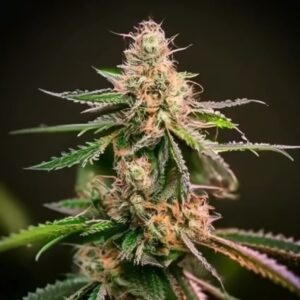

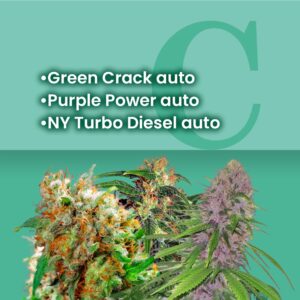
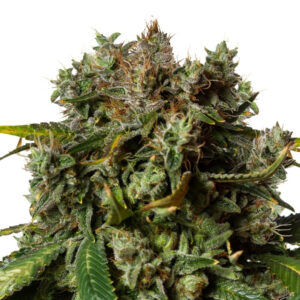

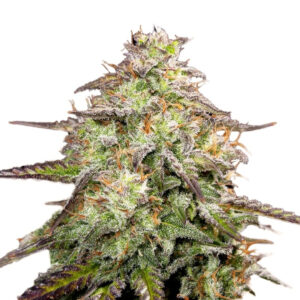
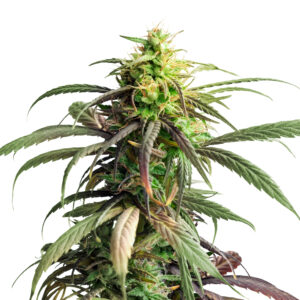






Related Posts

Marijuana Grow Guide
Chapter 10: Temperature, Humidity, and Ventilation
Chapter 11: Nutrients needed for each life phase
Chapter 12: Mildew, pests, and diseases
Chapter 13: Growing hydroponically
Chapter 14: Pruning, Topping, Super-Cropping
Chapter 15: Harvesting
Chapter 10
Temperature, Humidity, and Ventilation
Growing potent cannabis plants incorporates mastering the art of having these inseparable factors – temperatures, humidity, and ventilation. However, some marijuana growers tend to overlook the…

Welcome to the exciting world of cannabis and cryptocurrency! BTC and marijuana make the perfect match, offering a seamless and secure way to purchase weed seeds and accessories.
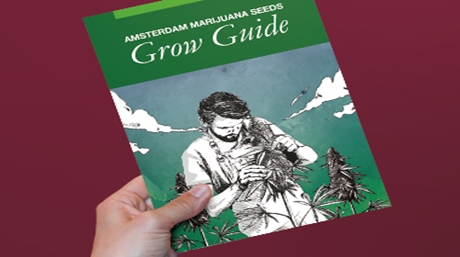
Choosing to grow your own marijuana may be one of the best decisions you’ve ever made. There are many benefits to growing your own weed instead of just buying it. You will know exactly what you are smoking and how the plant was treated. You will know if it has any chemical residue on it and the quality of the plant. Any grower will tell you, smoking the bud you grew yourself has a particular satisfaction to it that you cannot get with purchased bud. It’s a fun and exciting endeavor and you will probably never want to return to buying your bud.